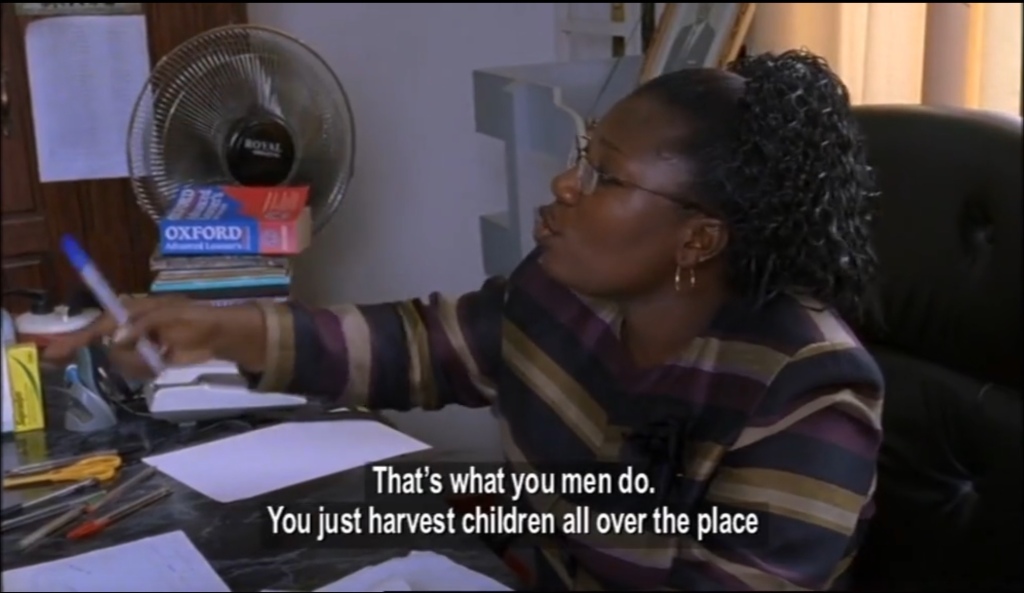Throughout the opening sequence of Sisters in Law, Kim Longinotto’s utilisation of digital technology has allowed her to create a successfully unobtrusive observational documentary.
The sequence opens on an establishing wide shot of the outskirts of Kumba. Due to the fact that this is filmed using a handheld camera out of a car window, Longinotto is able to make use of automatic digital stabilisation. In effect, this allows the shot to be of a high quality, despite the fact that it was filmed in a moving vehicle. In addition to this, the long take exhibits Longinotto’s journey as she gets closer and closer to Kumba. It is likely that she filmed out of the window for a long period of time, due to digital storage being cheap and practically unlimited. Afterwards, the take was likely edited together in post-production to demonstrate her journey.
Within the village, a number of wide shots display the rural vistas of Kumba. The foreground and background of each shot is in perfect focus, reinforcing the fact that no professional cinematographic skills are required to operate a digital camera. Due to Longinotto’s ability to film everything she encounters, she is able to select appropriate footage in post-production – an example of this can be seen when a man on a bicycle smiles at the camera.
As Longinotto cuts to the office, the portability of the digital camera becomes apparent. Due to the small stature of the camera, Longinotto is able to work in the crowded office. She is able to reposition the camera through zooming, panning and tilting – rather than having to physically move an analogue camera. The fluid camera movements continue to follow the action throughout the film, in an unobtrusive manner. Due to the fact that digital cameras are able to capture footage well in low lighting, no artificial lights are required to be used, preserving the credibility of the film. Longinotto is able to merely film the unfolding events from the corner of the room and the footage will be adequate for a cinema screen. Alongside this, no external sound recorder or boom pole is required to record the sound of the environment. Instead, all the sound is captured and recorded with the camera itself and the requirement to synchronise sound in post-production is nullified – making the editing process much more convenient
Due to cameras themselves being cheap, Longinotto can afford to make use of a multi-camera setup which, in effect, allows her to capture two simultaneously occurring events. This can be seen when a closeup of the wife is overlayed with the audio of a separate clip. In addition to this, a subtle digital camera is much less imposing than a staggering analogue camera, which requires setup. This allows for a much more unobtrusive documentary, as the subjects are bound to act more naturally in the presence of a more unnoticeable camera. In order to preserve authenticity, Longinotto is able to utilise the zoom and autofocus functionalities respectively, which are available on a digital camera. Because of this, the closeup of Vera goes into focus after a brief moment. This further democratises documentary filmmaking, due to zooming being an automatic and intuitive process.
A non-directional microphone is also built into the camera, which allows Longinotto to record all audio at once – albeit at the cost of hearing some voices louder in the mix than others. Finally, due to the fact that Longinotto is able to capture every moment with her digital camera, a number of revealing moments are captured and make it into the final cut. A clear example of this can be seen in the first sequence when Vera shouts “that’s what you men do!” At the husband.
